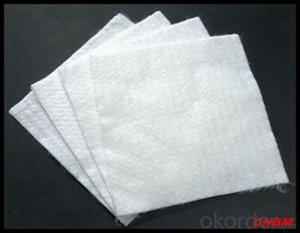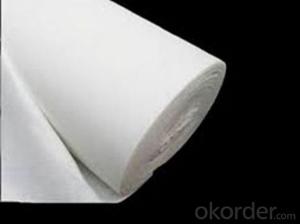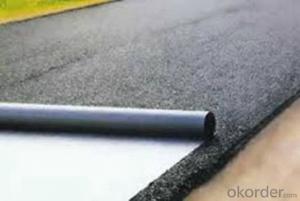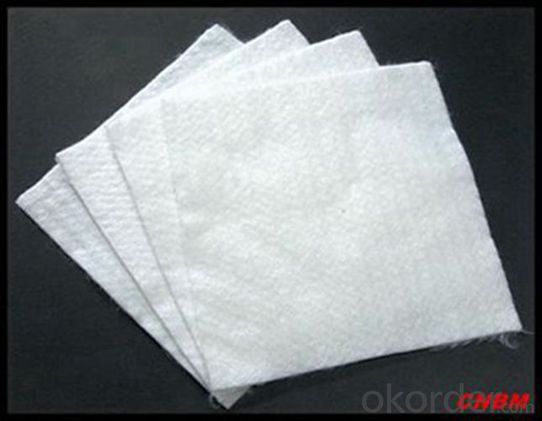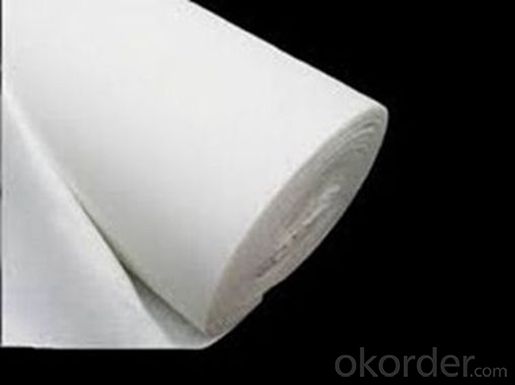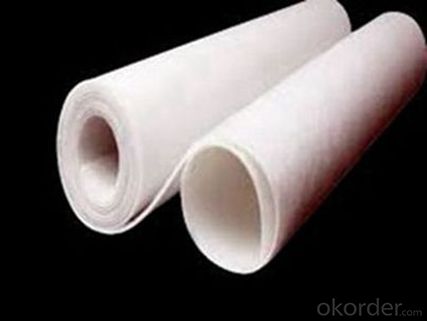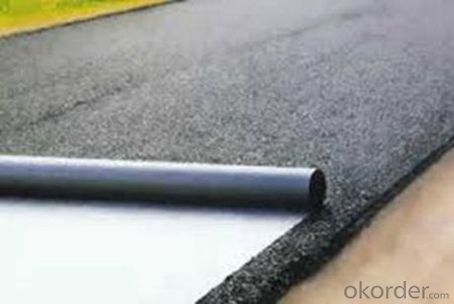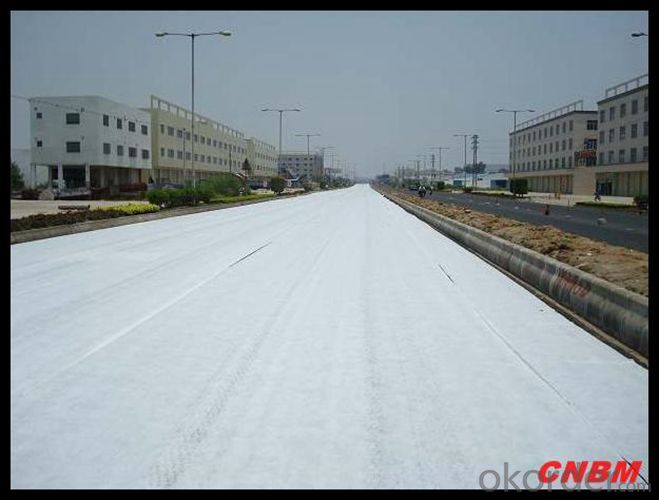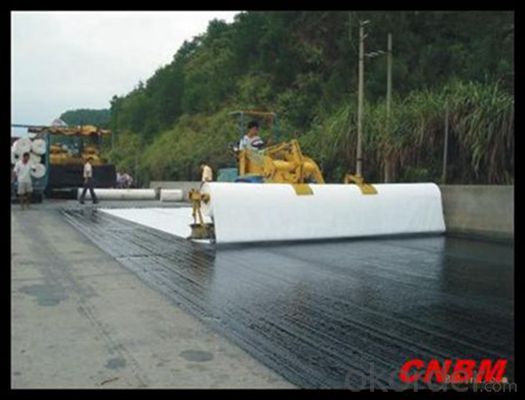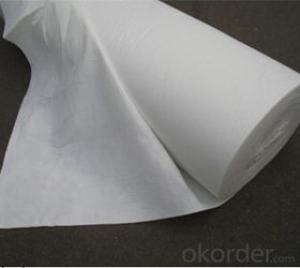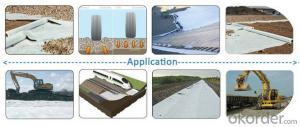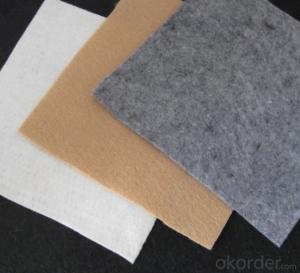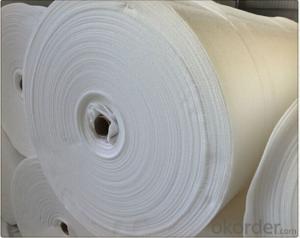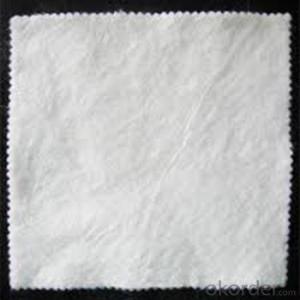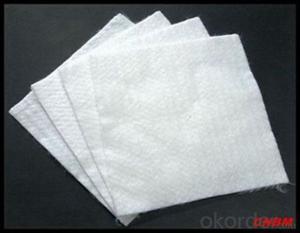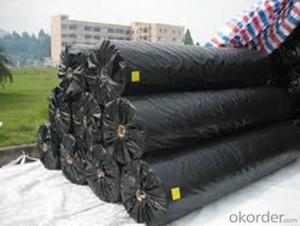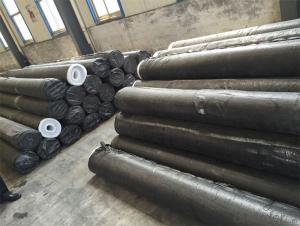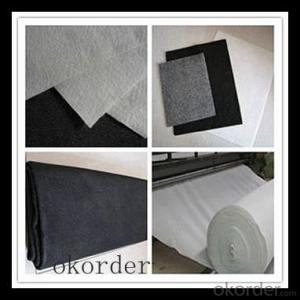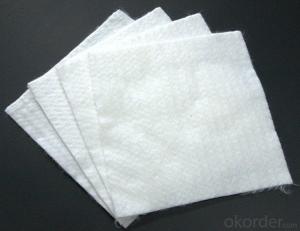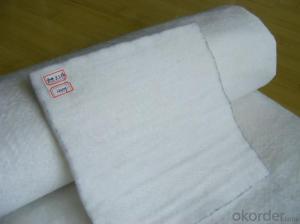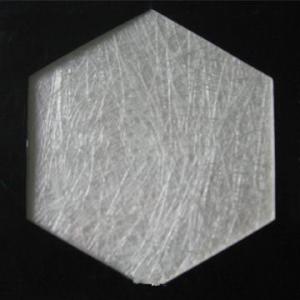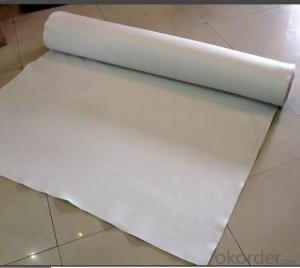Membrana Geotextil Megaflex Non-Woven Fabric Geotextile Price Per M2 For Construction
- Loading Port:
- China main port
- Payment Terms:
- TT OR LC
- Min Order Qty:
- 1000 m²
- Supply Capability:
- 1000000 m²/month
OKorder Service Pledge
OKorder Financial Service
You Might Also Like
Specification
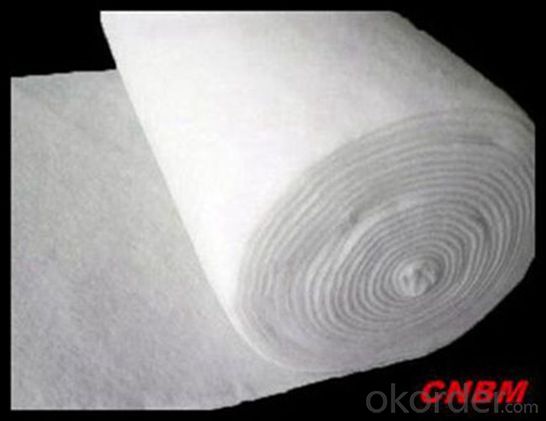
Product introduction:
1.high quality geotextiles
2.CE, ISO9001, ISO14001
3 Sample available
4. 100-800g/m2
Advantages:
1) Reinforcement effect: for roads, railways, airports, dams, breakwater, retaining wall backfill, side
weirs and other rock engineering, soil scattered pieces of soil modulus stress increases, limiting soil sliding pieces shift and improve stability.
2) Protective role: to prevent the embankment from the wind, waves, tide, rain erosion, and for embankment, slope, bottom protection, prevent soil erosion.
3) Filtration effect: used for the embankment, dam, river and coastal stone, slopes, retaining walls of
the filter layer to prevent the sand grains through, while allowing the water and air pass through freely.
Quality assurance
1.On a regular basis or as per your request,we entrust national testing agencies to conduct quality inspections
2. Strictly in accordance with the ISO9001-2008 international quality system standard,we monitor and manage the whole process throughout production,quality testing,and measurement to ensure product quality
3. For quality-related construction delay or substandard construction(except for damage or losses due to customer’s responsibility or irresistible natural disasters),we have refunding,replacement,and repair services.We will respond to customers’ feedbacks on quality issues within 24 hours.
After-sales service
1.In order to provide customers with comprehensive technical support,we will provide technical and other related information upon request in a timely manner.
2.In required,we will appoint specialized technicians to the construction site to give technical trainings to construction people,and offer technical guidance throughout the whole construction process.
3.For damage due to shipment and delivery,after we receive the complaint,we will check the issure through provided pictures and videos.If our responsibility is confirmed,we wil offer free replacement.
4.When the construction is completed,as your request,our technical staff may participate in the final acceptance.
FAQ:
Q: What kind of payments does jenor support?
A: T/T, L/C, Cash are accepted.
Q: Do you charge for the samples?
A: Accordeing to our company policy, the samples are free, we only charge the freight fee. And we will return the freight fee during the next order.
Q: Can you produce according to customers' design?
A: Sure, we are professional manufacturer, OEM and ODM are both welcome.
Q: Do you have other products?
A: Yes, please check the pictures:
Packaging & Shipping
Packing: PLASTIC FILM INSIDE, AND WOVEN BAG OUTSIDE
Shipping: About 15 days after receipt the deposit
- Q: How do geotextiles help with filtration in geosynthetic clay liners?
- Geotextiles help with filtration in geosynthetic clay liners by serving as a barrier between the clay liner and the surrounding soil. They prevent the migration of fine particles from the soil into the clay liner, ensuring efficient filtration and preventing clogging of the clay liner.
- Q: Are high geotextiles harmful to people?
- High-tech geotextile is not harmful to people. High-iron geotextile for strong, tensile, anti-friction coefficient, anti-oxidation time and other indicators are very strict, it can be said that geotextile applications so far the highest requirements. The raw materials for the production of geotextile are polypropylene fiber, polypropylene fiber civilian use: can be pure or wool, cotton or viscose blended mixed woven to produce a variety of clothing. Can be used for weaving all kinds of knitwear such as socks, gloves, sweaters, knitted pants, dish cloth, mosquito cloth, was expo, warm filler, diaper wet. Industrial use: geotextile, industrial filter cloth, carpet, fishing nets, canvas, hose, concrete reinforced materials, industrial fabrics, nonwovens and so on. So do not worry, high-speed rail geotextile with environmental requirements, no harm to the human body.
- Q: Can geotextiles be used in coastal dune stabilization projects?
- Yes, geotextiles can be used in coastal dune stabilization projects. Geotextiles are often employed to reinforce and stabilize sand dunes by trapping and retaining sand particles, preventing erosion caused by wind and water. They can be used in various applications such as dune formation, dune restoration, and beach nourishment projects to enhance the natural protection of coastal areas and mitigate erosion.
- Q: Construction scheme of geotextile water filter
- Second, the design: program one: in strict accordance with the requirements of the national standard construction, 5-year warranty 1, in the smooth level of leveling the overall construction brushing JS waterproof latex or polyurethane waterproof coating, the thickness of the national standard 1 standard; Weak parts to do additional layer to strengthen; 2, do 20 ~ 30mm thick waterproof mortar protective layer, divided into two construction, layer waterproof layer of pulp interface; require nano-silicon waterproofing agent and expansion agent compound use. 3, backfill when asked not to smash the waterproof layer. 4, indoor ground practice ibid, the wall to do high 1m. Option 2: with reference to national standard requirements simple practice, the warranty period of 1 year 1, the overall construction of coated asbestos asphalt waterproof coating or waterproof cold primer, the thickness of the standard by the national standard 2; special weak parts to do additional layer to strengthen; Outside the protection, requiring the use of sticky or sticky sticky construction; 3, backfill when asked not to smash the waterproof layer. 4, indoor ground practice reference program one, the wall to do high 1m.
- Q: How long do geotextiles last?
- Geotextiles typically have a lifespan of 20 to 50 years, depending on factors such as the type of material used, environmental conditions, and the intensity of use.
- Q: How do geotextiles help in preventing piping in dams?
- Geotextiles help in preventing piping in dams by providing a strong and stable barrier against soil erosion. They are placed within the dam structure to reinforce the soil and prevent it from being washed away by the flow of water. This helps in maintaining the integrity of the dam and preventing the formation of internal erosion channels or "piping". Geotextiles also improve the filtration properties of the soil, allowing water to pass through while retaining fine particles, which further helps in preventing piping.
- Q: River design design depth of 1 meter, 100 meters wide surface, requiring geotextile cloth two films. How many grams are appropriate? Bao Bao package material per square meter open to move to cut the amount of taxation Bao Bao Bao how much money first thank you master, urgent use. More
- Collar - Xiang, composite geomembrane, geotextile, a variety of specifications
- Q: Geotextile puncture test standard
- Staple stitch filament piercing filament woven weaving
- Q: What are the different methods of geotextile testing for strength and durability?
- There are several methods used to test the strength and durability of geotextiles. Some common methods include grab tensile strength testing, puncture resistance testing, tear resistance testing, burst strength testing, and UV resistance testing. Each method assesses specific properties of the geotextile to determine its strength and durability in various conditions and applications.
- Q: How long do geotextiles typically last?
- Geotextiles typically last between 20 to 25 years, depending on various factors such as the type of material used, installation conditions, and the intensity of use or exposure to environmental elements.
Send your message to us
Membrana Geotextil Megaflex Non-Woven Fabric Geotextile Price Per M2 For Construction
- Loading Port:
- China main port
- Payment Terms:
- TT OR LC
- Min Order Qty:
- 1000 m²
- Supply Capability:
- 1000000 m²/month
OKorder Service Pledge
OKorder Financial Service
Similar products
Hot products
Hot Searches
Related keywords
